The Mathematical Problem with Music and How to Solve It
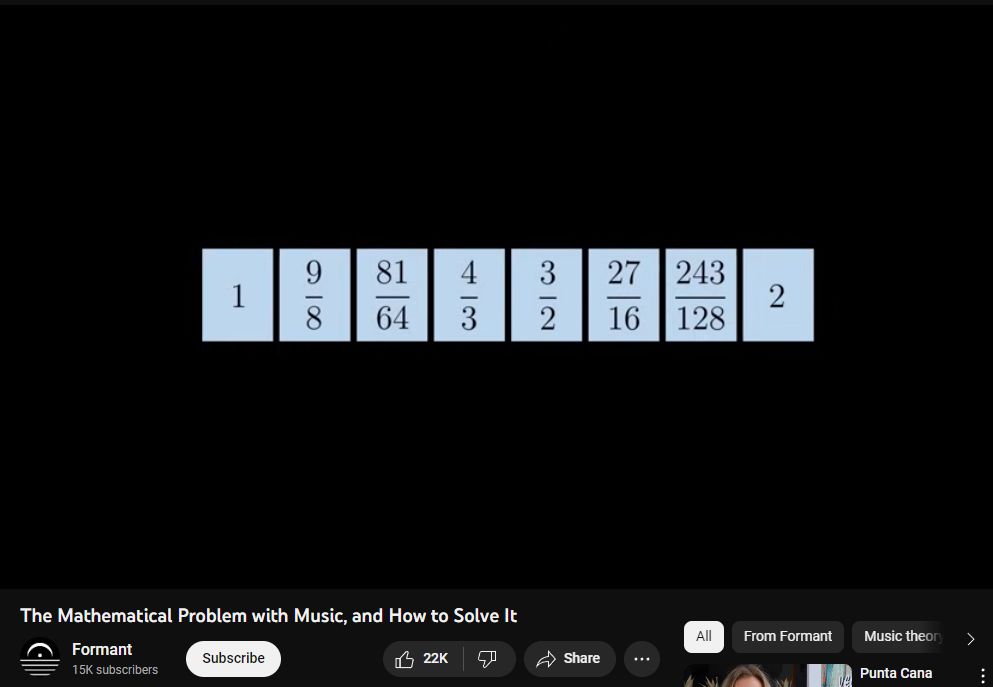
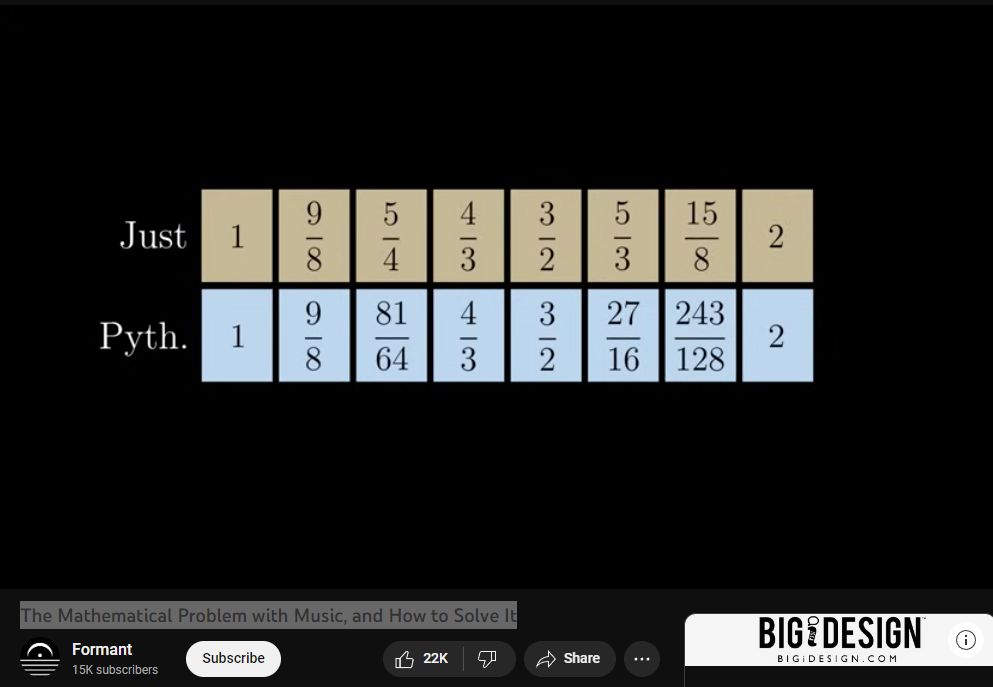
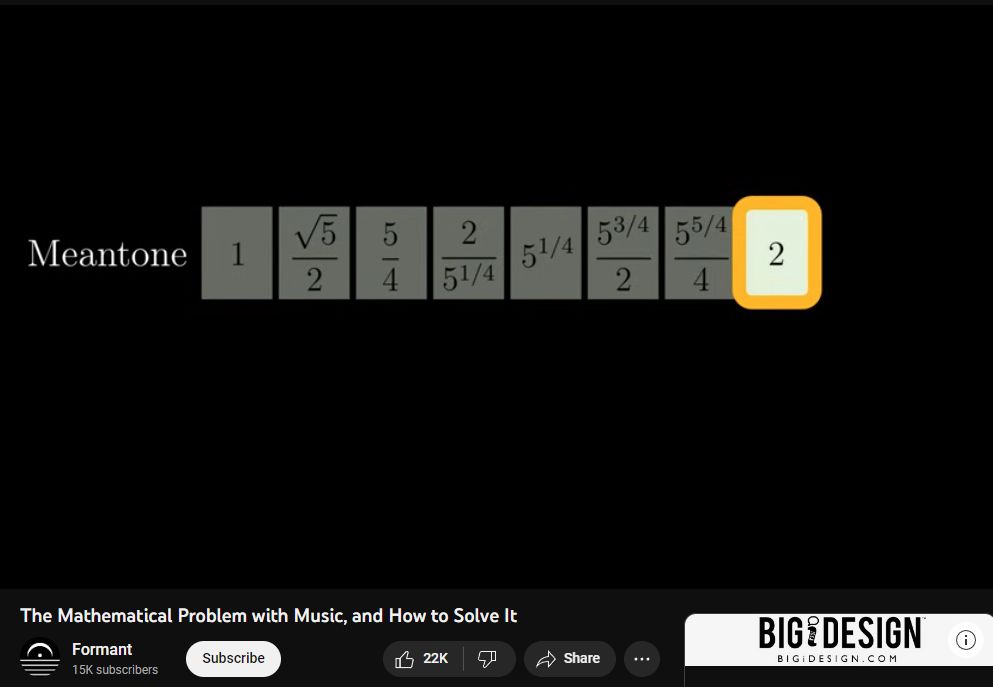
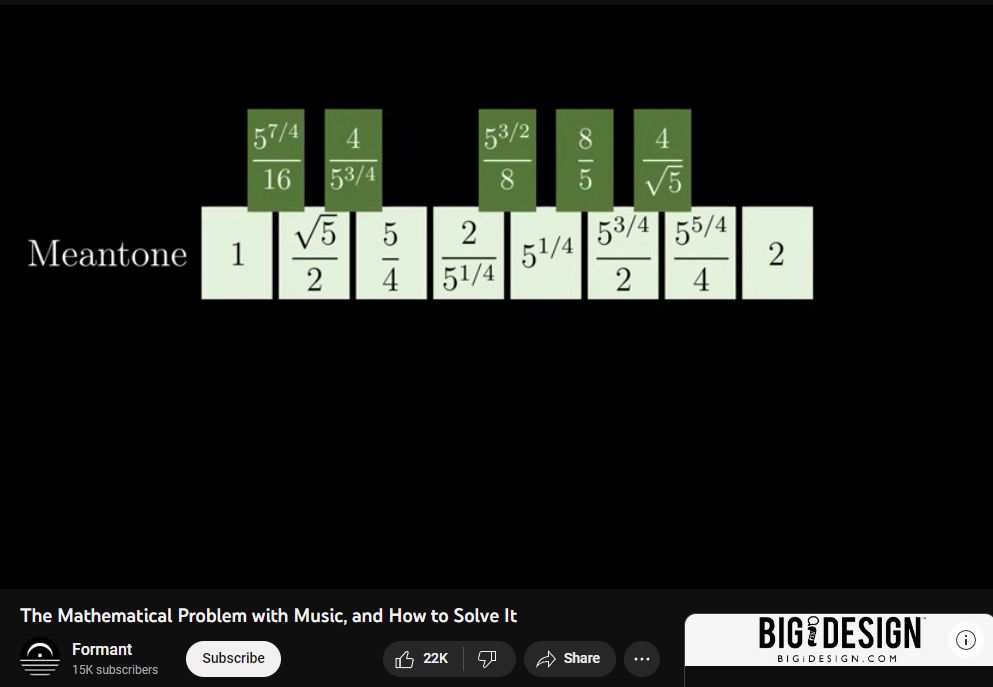
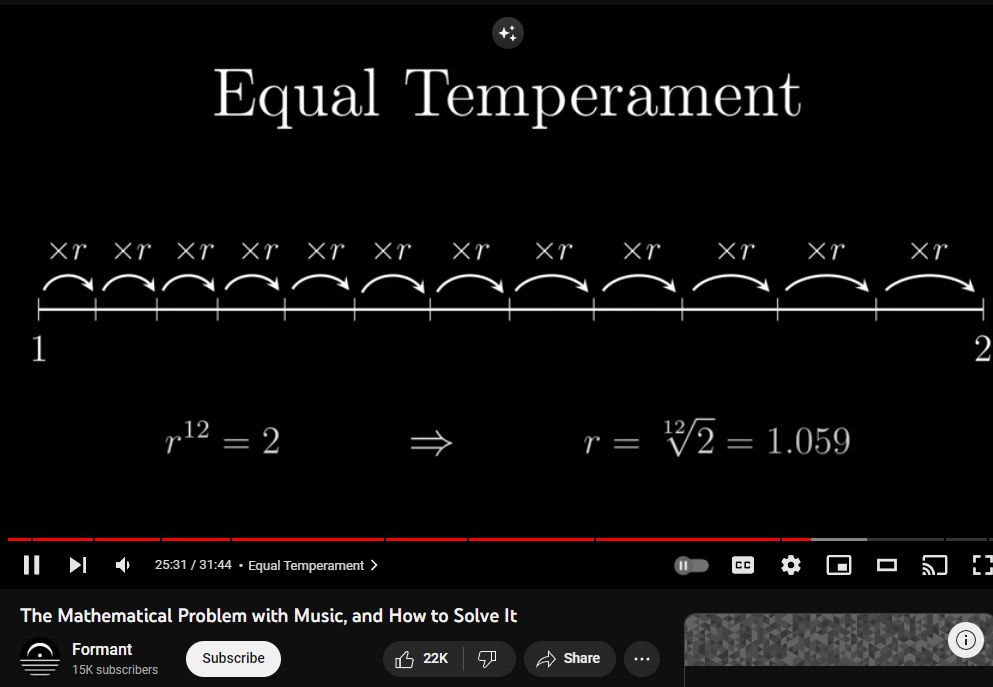
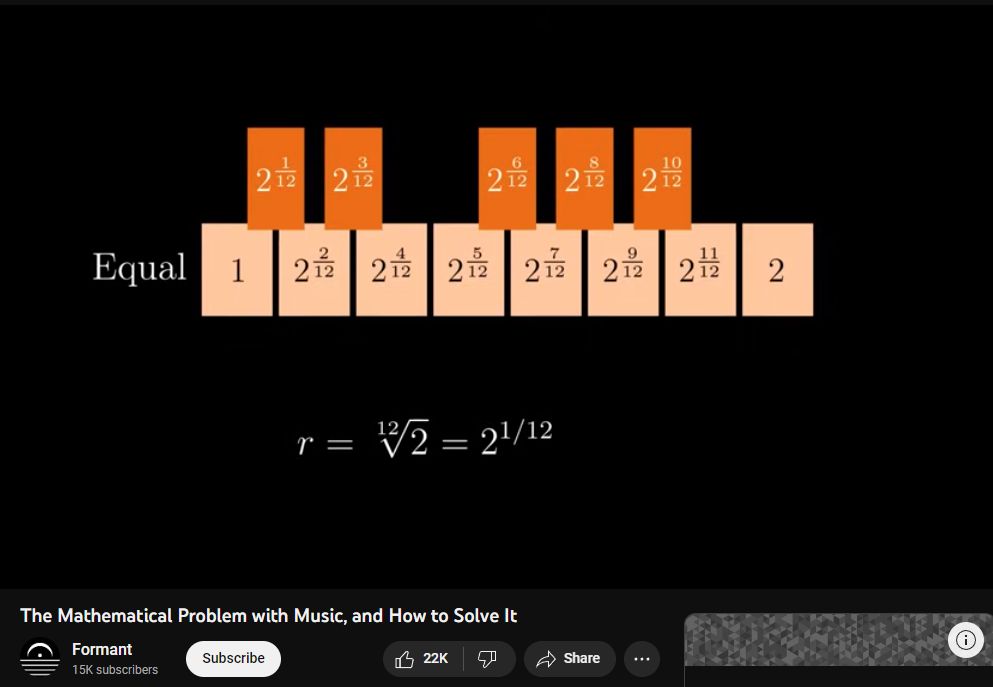
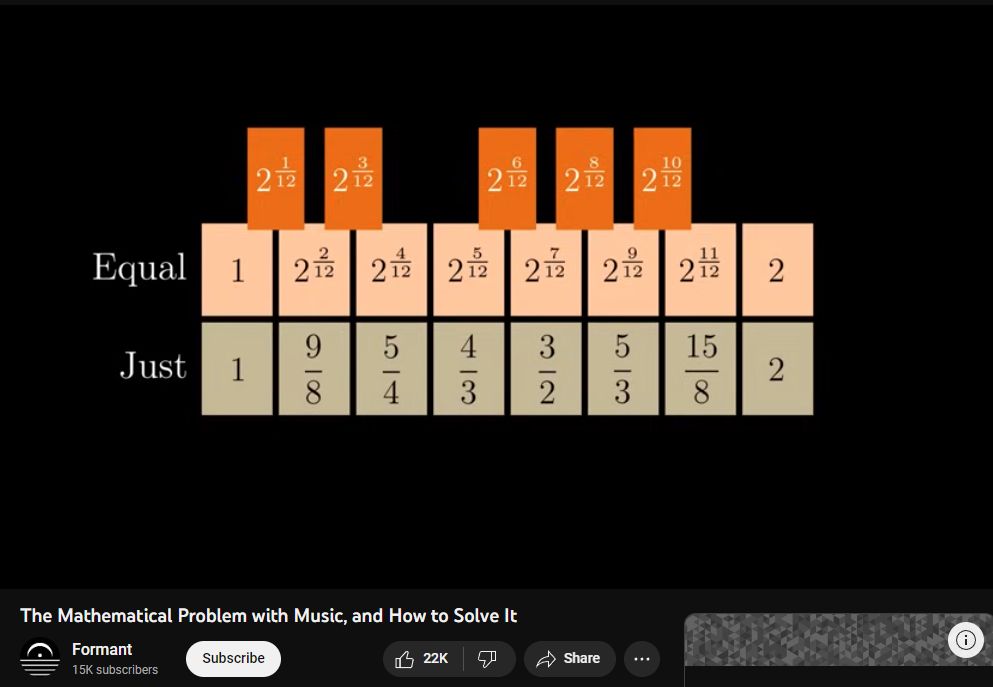
CHOICE COMMENTS TO VIDEO
Equal temperament without any just interval permit to keep a permanent place for ALL notes. To try it you must avoid the just fifts-A/E can stay just because E is metalic and will go down itself. But D cord must be tuned maximum hight possible. The same for G string. The difference is very small. Each interval must be modified respecting follow rules: 1/unisson =just, 3minor=smaller, 3major=bigger, 4=bigger, 5=smaller, 6minor=smaller, 6major=bigger, 8=bigger. How much? It’s you who decide! The direction of modification is important only.
DISSONANCE OF BEAT FREQUENCIES When you mix frequencies together you end up with the cross-Cartesian product of all of the sums and differences of the frequencies being mixed. So, if I mix two frequencies A and B together, I end up with four different frequencies: A, B, A+B, A-B (or B-A if B should be larger). In time domain graph of the waveform, you would simply see one frequency superimposed over another similar to images depicting an AM modulated waveform.
This is one of the best outlines of scales, intervals and temperaments I have seen on line. Some historical perspective, just enough to explain the new demands due to harmony singing, or modulation, but not going into excessive and misleading detours that you get so often in explanations of musical scales. [Nice how] you point out clearly that equal temperament is a necessary compromise and not a perfect solution.
One thing that could have been explored a bit more (perhaps) is the reason why small integer ratios sound more harmonious, and how that’s literally connected to constructive and destructive interference in physical waves. For example, a brief audio & visual representation of how ‘beats’ form when two notes slightly off-tune from each other are played. 29:34 The transposition of the melody here actually sounds great past the first chord. The final dominant 7th chord is more in-tune with the harmonic series, being constructed of 5/4, 3/2, and ~7/4. The preceding chord is a minor chord with a lowered minor third based on that 7/4 interval. 11:50 — Equating a Temperament with a Tuning is a common mistake, but in fact not quite correct! Temperaments a subset of Tunings ; all Temperaments are Tunings but not all Tunings are Temperaments! A temperament is a scheme for adjusting pitches from their exact-integer-ratios. So, Pythagorean and Just Intonation are Tunings, but they are not Temperaments, because they use exact integer ratios. Equal-Temperaments, Meantone Temperaments, and Well-Temperaments are temperaments. They have deliberately and systematically adjusted their pitches away from exact whole-number ratios. 18:37 — Minor Historical nit: Meantone Temperaments were much more common in the mid-late Renaissance than in the Baroque, by which time Well-Temperaments began to take over (and persisted into the mid-late 1800s, BTW — longer than most people realize).
>> I read “resonance” in this comment as “ultra-complex inter-play of resonances, creating in fact subtle nodal / anti-nodal added frequencies that altogether comprise the musical ‘timbre’ or ‘voice’ of the instrument.” — This may explain why unlacquered drums (and even sticks!) sound so wildly different from heavily-coated ones; or why a Strad is so highly prized. The same is true in electronic amplifiers and veers strongly into the realm of TIM distortion and generally intermodulation.
>> The ultimate problem is digitalia which removes all heart and soul and feeling from music so muddled and reproduced. It turns out that the micro-anomalies, errors, perturbations are in fact what makes music lovely and musical performance (and performers) indispensible. MIDI did not ‘oust all drummers’ as was initially predicted and in fact proved the opposite need. Autotune makes its hallmark awful mark routinely. “ProTools sound” has become denigrantly well-known amongst recording engineers. “Perfection” is always an aspiration and never an attainment, IMO.
Well, thanks for the informative video. The equal temperment has not only the octave as a geometrically sound interval but also the tritone that the dominant-seventh chord is the best tuned chord on the piano with its notes only a hair above what the seventh and leading-tone should be. This changed music drastically in that the dominant-seventh gained in popularity. The out-of-tunedness of the piano is compensated by the deeper and less harmonic notes of the bass overpowering the difference-tones of the above notes. Singing instruments and singers fluctuate their notes within a pitch range in order to accommodate the exigencies of the harmonic movement. Tones which occur simultaneously would otherwise form dissonances with the actual harmonies. Using your a=440hz a c# would need (on the flute for ex.) to be 550hz in order to produce a difference tone of 110hz (or an A’). at the same time, this c# combines with an e”=660hz in order to produce an A’=110hz. The a’ played together with the e” produces an E= 330hz. Should one of the harmony notes not have this geometry to the tonic, the chord would sound horrific. The higher the instruments are playing, the easier this is to hear this. The aformentioned c# changes its pitch as soon as a g” is introduced, bending higher to what’s called a leading tone to c#’= 556hz, while the g” is a geometric fourth (4/3) above the d’ which is also a 5th below the a’ (g = 391hz). The difference tone produced between these two notes g (391hz)and c# (556hz) is an E = 165hz, fitting with the 110hz = A’ perfectly consonant in the harmony. Walter Piston illustrated this phenomenon with a contrabass playing first the C# of an A-major chord and adding the septime and watching the visible raising of the bass-note C#. The Juilliard String Quartett with Bob Mann as the first violin experimented with playing tempered for about 10 years from the mid 50s (heard on many recordings) but stopped this practice due to intonational differences. The Guarneri (David Sawyer as the cellist) thought that they were playing “wide” thirds but I showed them that this wasn’t so – they were indeed playing in-tune using what I call “Integrated Intonation”.
>> One of JAN IRVIN (LOGOS MEDIA) many interviews with Dr Hans Utter notes 57 notes in the octave of Indian music played on Sitar.
So, I built a guitar about 55 years ago. I knew how long my fingerboard was and so I knew where I wanted to put the fret for the first octaves (which I know as the first harmonics). On the other hand I didn’t have any idea if I was going to tune the open strings to the right frequency – though I would of course tune the strings to each other – so I guess I was going to transpose just about everything until I got that right! That more or less forces me to go with 12 geometrically equal intervals and it seemed so obvious that I simply got out the log tables – yes, that long ago, big shout out to John Napier here – and worked out where to cut my fingerboard for the frets. It seemed so obvious at the time, I never thought there could be any (sensible) other way, so that’s very good to know now. This is the no-nonsense music theory! Many called themselves teachers in music theory are priggers, get your tuition and gave a lot of crappy terminologies…ruined many in music schools…